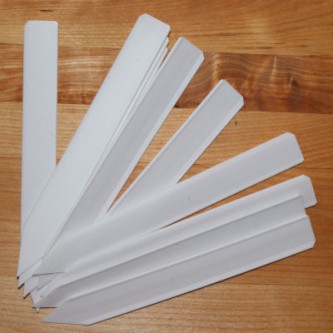Tomato Lava Flow is a tomato variety that is slightly smaller than a beefstake tomato but much larger than a cherry tomato. We call these tomatoes salad tomatoes or simply tomatoes. The tomatoes weigh an average of 80–120 grams each and have a diameter of 4–6 cm. This tomato was developed by Gary Cass from Hawaii in 2012. According to some sources, Gary named this tomato Lava Flow because its colours and stripes resemble the lava flowing from the Kilauea volcano. This tomato ripens from green to golden yellow-orange with light green and dark orange flaming stripes. The flesh of this tomato is golden yellow with orange flames, and the core of this tomato is strikingly orange-red in colour. The juicy flesh is nice and firm with a good flavour. The flavour of this tomato is a good balance between sweet and sour, but the sweetness is slightly more pronounced. This tomato plant is very productive and the tomatoes ripen mid-early.
Provide the plants with very sturdy support. Don't allow the plants to dry out. Use this delicious yellow tomato in salads, on pizzas, in chutneys, in omelettes, in Italian dishes, pasta sauces, ketchups, tomato soup and in other dishes containing tomatoes. Tomatoes should be stored outside the refrigerator. Tomatoes that have been processed into sauce, soup, purée or passata can be frozen. Ensure sufficient sun and warmth and support the plant well for the best results. Tomatoes contain a lot of vitamin C and lycopene. These are best absorbed by the body when the tomatoes are heated. Non hardy annual. Height: 250–350 cm.
Indoor sowing: February - April
Germination: 6 - 14 days
Germination temp: 20 - 25 °C
Sowing depth: 2 - 3 mm
Transplanting: when the seedlings are about 20 cm tall
Transplanting in garden: in May, after the last night frosts
Plant spacing: 45 - 50 cm
Planting position: sunny - sheltered (greenhouse)
Days till harvest: 60 - 90
Sow indoors from February on in trays filled with moist pottingsoil. Sow shallow and press the seeds gently in the soil, don't cover them with soil, because tomatoes are light germinators. Put the trays away somewhere warm at 20 - 25 °C and cover them with clingfilm or a lid. Keep the temperature as even as possible and don't let the temperature drop during the night. Keep moist, but not to wet to prevent rotting of the seeds. Remove the clingfilm or lid when the seedlings emerge. Transplant the seedlings to seperate pots approx. 10 days after emerging. Put them away a bit cooler at approx. 18 - 20 °C.
Harden the tomatoes of, from the middle of May, when there's no longer any danger of nightfrosts. Put the pots at a temperature of 15 - 18 °C for a week and reduce the amount of water for this week. Put the plants outdoors after this week on a sunny and sheltered plot with well draining soil or put them in a greenhouse. Make sure that there is no longer any nightfrost.
Tomatoes need some maintenance to ensure a good harvest. Give the plants a sturdy support with some sturdy and large bamboo sticks. Remove all suckers that will form in the axils of your plants. Remove all the leaves below the lowest hanging fruits by the end of July till the beginning of August. Remove all the leaves of all plants together with the tops of all plants from the end of August till the beginning of September to ensure the ripening of most of the green tomatoes. Harvest the tomatoes by cutting them with scissors. Tomatoes can't be kept for a long period. Don't keep your harvested tomatoes in the fridge. So use them a soon as possible after harvesting. Tomatoes used in sauces can be kept frozen to store.









